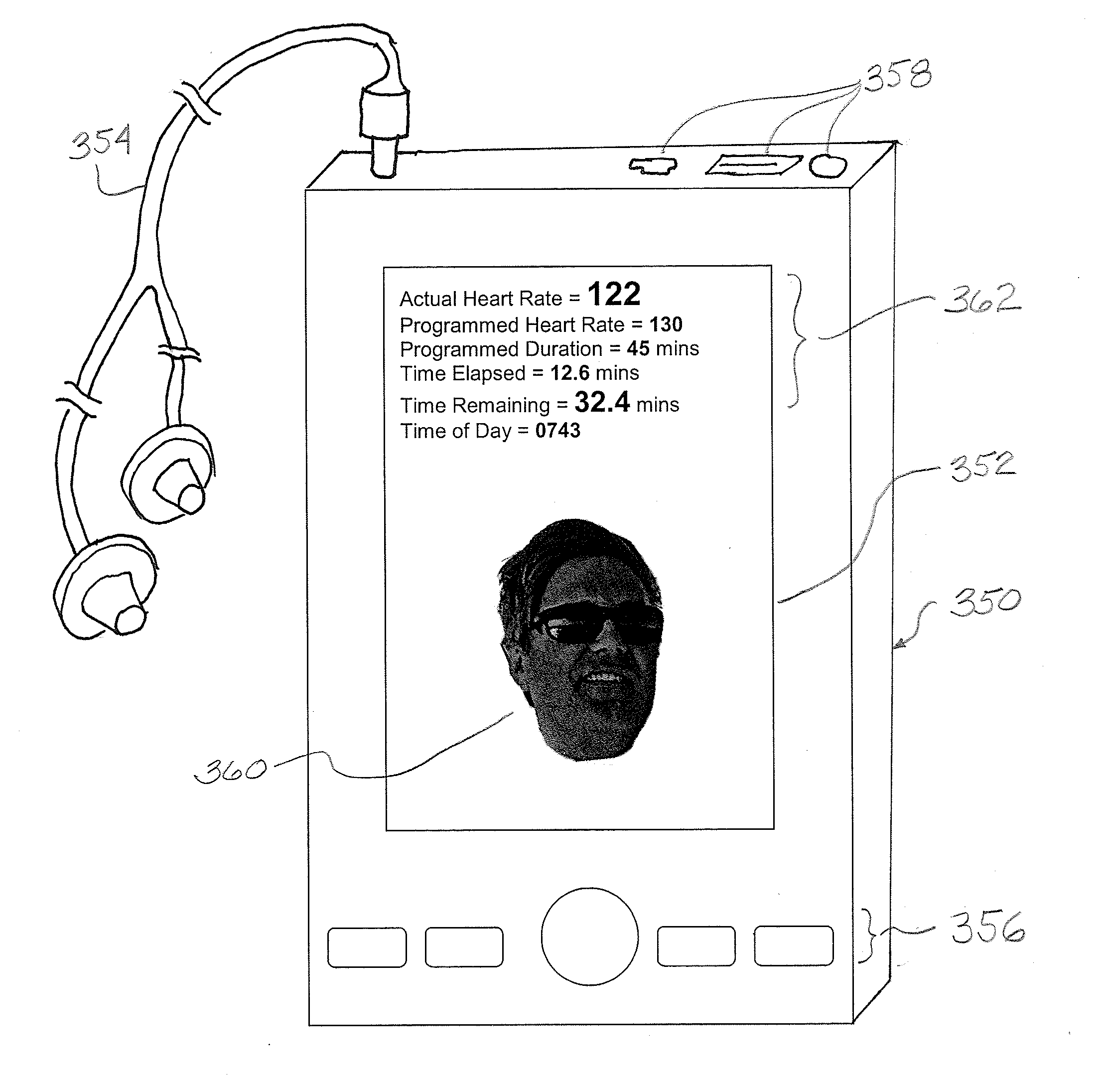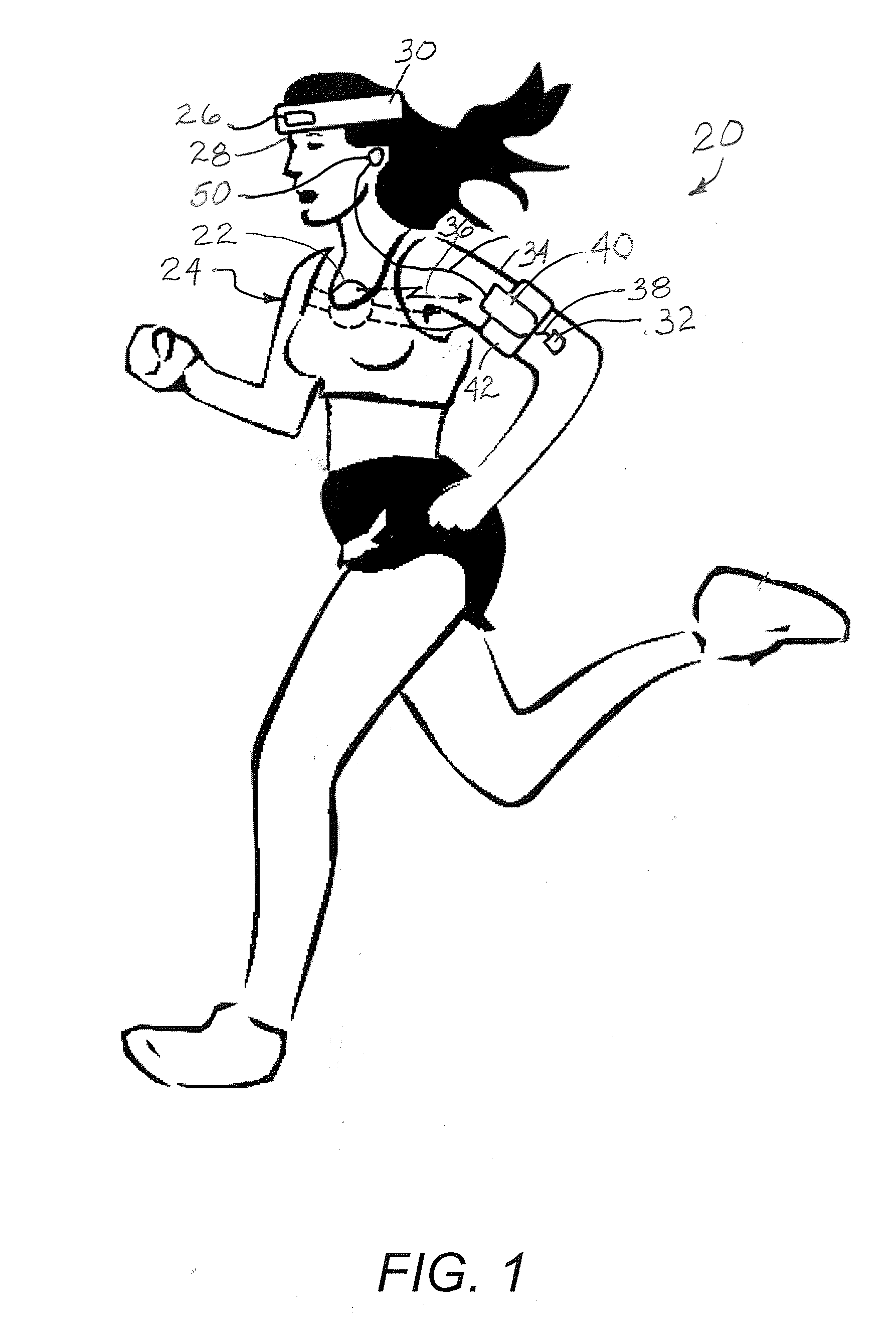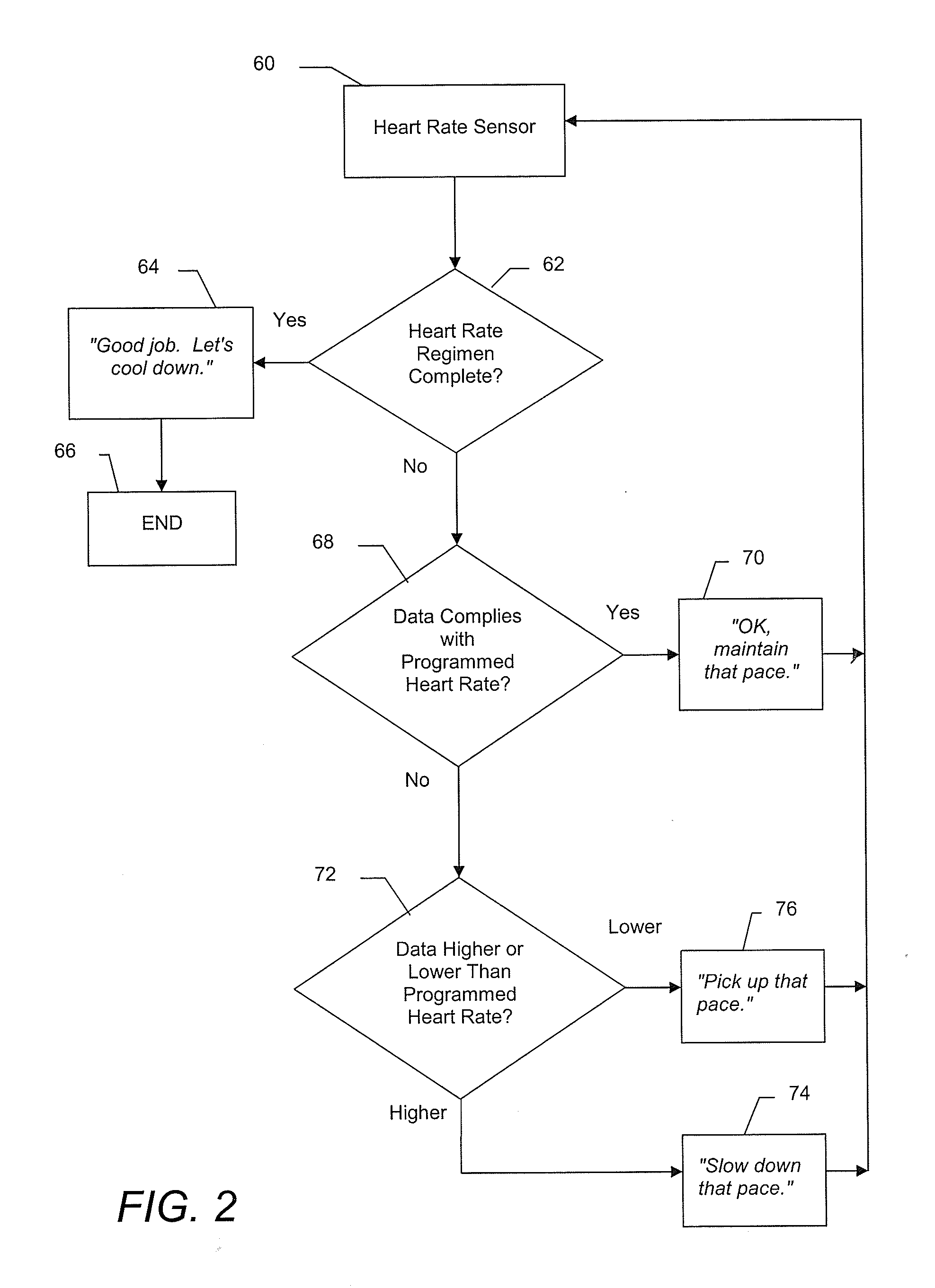Audible biofeedback heart rate monitor with virtual coach
a heart rate monitor and biofeedback technology, applied in the field of audible biofeedback heart rate monitor with virtual coach, can solve the problems of improper calibration, significant inaccurateness, and pedometer suffering
- Summary
- Abstract
- Description
- Claims
- Application Information
AI Technical Summary
Benefits of technology
Problems solved by technology
Method used
Image
Examples
Embodiment Construction
[0024]Referring now in detail to the drawings, in which like reference numerals refer to like or similar elements or steps among the views, there is shown in FIG. 1 an audible biofeedback heart rate monitor with virtual coach system 20 having a heart rate sensor 22 that is removably attached to the chest of an exerciser 24. Also shown are alternative embodiments of sensors, in which a sensor 26 may be attached to the forehead 28 of the user (through a sweat band 30 or other device) or in yet a further embodiment, a heart rate sensor 32 may be adhesively or otherwise attached to a limb of the user, such as the upper arm 34, as shown.
[0025]Sensors such as those depicted employ known means for sensing a user's heart beat, or other physiological parameter, and determining the heart rate, and are configured with known means to convert the heart rate into an electrical signal that is transmissible to a processor worn on the body of the user or located elsewhere. Such known means for sensi...
PUM
 Login to View More
Login to View More Abstract
Description
Claims
Application Information
 Login to View More
Login to View More - R&D
- Intellectual Property
- Life Sciences
- Materials
- Tech Scout
- Unparalleled Data Quality
- Higher Quality Content
- 60% Fewer Hallucinations
Browse by: Latest US Patents, China's latest patents, Technical Efficacy Thesaurus, Application Domain, Technology Topic, Popular Technical Reports.
© 2025 PatSnap. All rights reserved.Legal|Privacy policy|Modern Slavery Act Transparency Statement|Sitemap|About US| Contact US: help@patsnap.com



